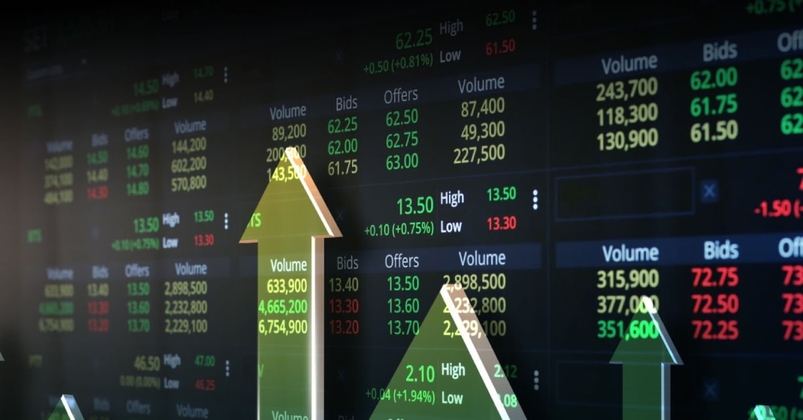- English
- 中文版
The Significance of Trading Volume on Market Trends
Why is Trading Volume Significant?
Trading volume is significant because it provides you with valuable insights about the market's behaviour. It's a key indicator of market sentiment and can help you understand the strength behind price movements. High trading volume compared to its usual activity, such as its 20-day moving average, often suggests a significant interest in a particular security or market. On the other hand, low trading volume relative to this benchmark may indicate a lack of current interest or the presence of uncertainty.
How to Analyse Average Trading Volume
The first step in analysing average trading volume is to understand the concept of 'volume bars'. These bars, often displayed at the bottom of price charts, represent the underlying asset's volume traded during a specific period.
Next, look for significant market moves accompanied by volume spikes. While a sudden increase in trading volume can sometimes preceed a price movement, it more often occurs simultaneously or just slightly after the actual move. For example, a surge in volume accompanying a price breakout confirms the strength of the move and signals the start of a potential new trend. Similarly, high volume during a consolidation period can indeed indicate that the market is preparing for a breakout, but this breakout will typically manifest as a sharp price movement with the spike in volume occurring alongside it.
Finally, consider the relationship between volume and price. If the price is rising on increasing volume, it suggests a strong upward trend. However, if the price is rising but the volume is falling, it could indicate a weakening trend and potential reversal.
The Role of Daily Trading Volume in Market Activity
Daily trading volume is a record of the total number of share CFDs or contracts traded in a day and is often used as a barometer of market sentiment. High daily trading volume often signifies high investor interest and activity, but it's important to remember that this interest can be either positive (bullish) or negative (bearish). For example, a share CFD's volume might surge if it releases disappointing earnings, as numerous investors rush to sell. Therefore, while high volume indicates market attention, interpreting its meaning requires further context and analysis.
Moreover, daily trading volume can offer valuable insights into market liquidity. High daily volume indicates that there are plenty of buyers and sellers, making it easier to execute trades at desired prices.

Combining Real-time Volume Interpretation with Market Trends for Trading
Understanding Real-time Volume Data for Market Trends
Interpreting real-time volume data is an essential strategy for recognizing and capitalising on effective trading opportunities. This data reflects immediate market activity and is a critical indicator of supply and demand dynamics, liquidity, and the prevailing market sentiment.
- Volume and Price Relationship: Observing how real-time volumes interact with price movements is another key aspect. For instance, a price increase accompanied by high volume typically indicates strong buyer interest, which may suggest an upcoming uptrend.
The Influence of Volume on Market Direction
Trading volume is not just a number; it's a powerful force that can impact market trends significantly. By understanding the relationship between volume and price changes, traders can gain valuable insights into market sentiment and predict potential reversals.
Volume During Price Increases:
- High Volume Confirmation: When trading volume rises alongside a price increase, it can confirm the strength of the uptrend. This indicates buying pressure, showing investors' confidence and eagerness to purchase at prevailing prices.
- Low Volume Caution: Conversely, a stagnant or falling volume during an uptrend can be a signal of caution. It suggests either limited interest from buyers or potential exhaustion of the upward momentum. This could pave the way for a consolidation phase or even a trend reversal.
Volume During Price Decreases:
- High Volume Confirmation: An upsurge in trading volume during a downturn can solidify the bearish sentiment. High selling volume reflects investors' eagerness to offload their share CFDs, reinforcing the momentum of the downtrend.
- Low Volume Uncertainty: Similarly, low volume during a decline can raise questions about the sustainability of the downward movement. It might indicate waning selling pressure or even potential accumulation by bargain hunters. This creates uncertainty and requires further analysis to assess the trend's true strength.
High Volume and Trend Reversals
While high volume often signals the continuation of a current trend, it can also be a precursor to a reversal. Here's how:
Bullish Divergence: If a declining share CFD price is met with a sudden spike in volume, it could represent waning selling pressure and a potential bullish reversal. As sellers become fatigued, buyers might step in, causing a sudden increase in trading activity.
Bearish Divergence: Conversely, a surge in volume accompanying a rising price could indicate peaking buying pressure. This formation, known as a bearish divergence, suggests that the uptrend might be losing steam and a pullback or reversal could be imminent.
Useful Tools for Tracking Current Trends and Trading Volumes
In today's digital era, you have access to various tools that can help you track current trends and trading volumes effectively. These tools can provide real-time data, allowing you to make informed trading decisions based on the latest market activity.
- Charting platforms like TradingView and MetaTrader offer established functionality..
- Volume indicators can be another useful tool for tracking trading volumes. These indicators, such as On Balance Volume (OBV), Volume Rate of Change (VROC), and Money Flow Index (MFI), use volume data to provide insights into market sentiment and liquidity.
- Share CFD screeners can help you filter share CFDs based on specific criteria, such as trading volume, market capitalization, and price movements. This can save you time and effort, allowing you to focus on potential trading opportunities.
Conclusion
While predicting the future is impossible, carefully analysing trading volume can offer clues about potential price trends, which might contribute to a more refined trading strategy. Use these insights to complement your existing trading strategies, adding depth and precision to your every move. Embrace the ever-changing volume story, and watch your trading journey unfold.
The material provided here has not been prepared in accordance with legal requirements designed to promote the independence of investment research and as such is considered to be a marketing communication. Whilst it is not subject to any prohibition on dealing ahead of the dissemination of investment research we will not seek to take any advantage before providing it to our clients.
Pepperstone doesn’t represent that the material provided here is accurate, current or complete, and therefore shouldn’t be relied upon as such. The information, whether from a third party or not, isn’t to be considered as a recommendation; or an offer to buy or sell; or the solicitation of an offer to buy or sell any security, financial product or instrument; or to participate in any particular trading strategy. It does not take into account readers’ financial situation or investment objectives. We advise any readers of this content to seek their own advice. Without the approval of Pepperstone, reproduction or redistribution of this information isn’t permitted.
